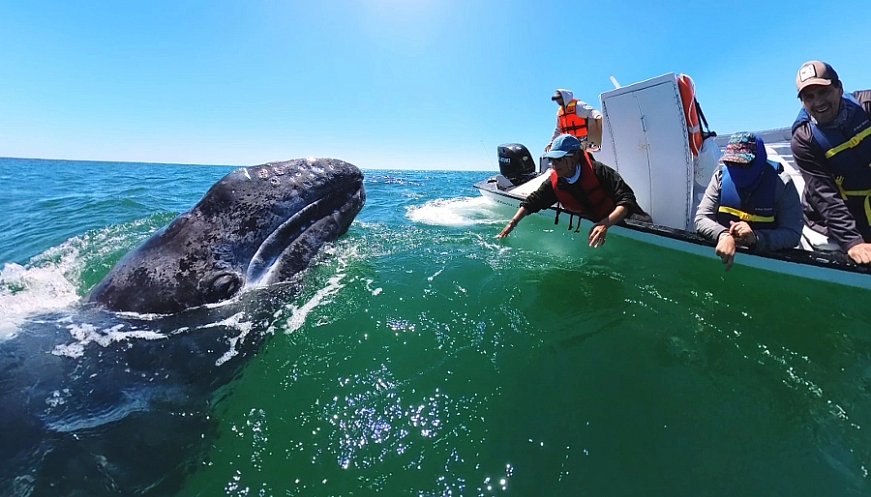 Photo: Carlos Gauna | The Malibu Artist
Photo: Carlos Gauna | The Malibu Artist
Three lagoons on the Pacific coast of Baja Sur, Mexico, are the only places in the world where wild animals willingly seek physical contact with humans and the close encounters between gray whales and people protect one of the planet’s largely undisturbed whale nurseries. That the more than 3,000 gray whales who migrate from Alaska every winter seek human touch is surprising considering they were hunted here until 1971. Naturalist Jim Dorsey, who has been guiding tours for two decades, believes humans and whales are kin and that whale ancestors walked on earth millions of years ago. In San Ignacio Lagoon, which is part of Latin America’s largest nature reserve and a UNESCO World Heritage site, locals make a living by operating the eight tourist camps along the lagoon or the limited whale watching boats. But it is not just the community that benefits. Gray whales are ecosystem engineers without whom the ocean wouldn’t function properly, says Sri Lankan whale researcher Asha de Vos.
More:














